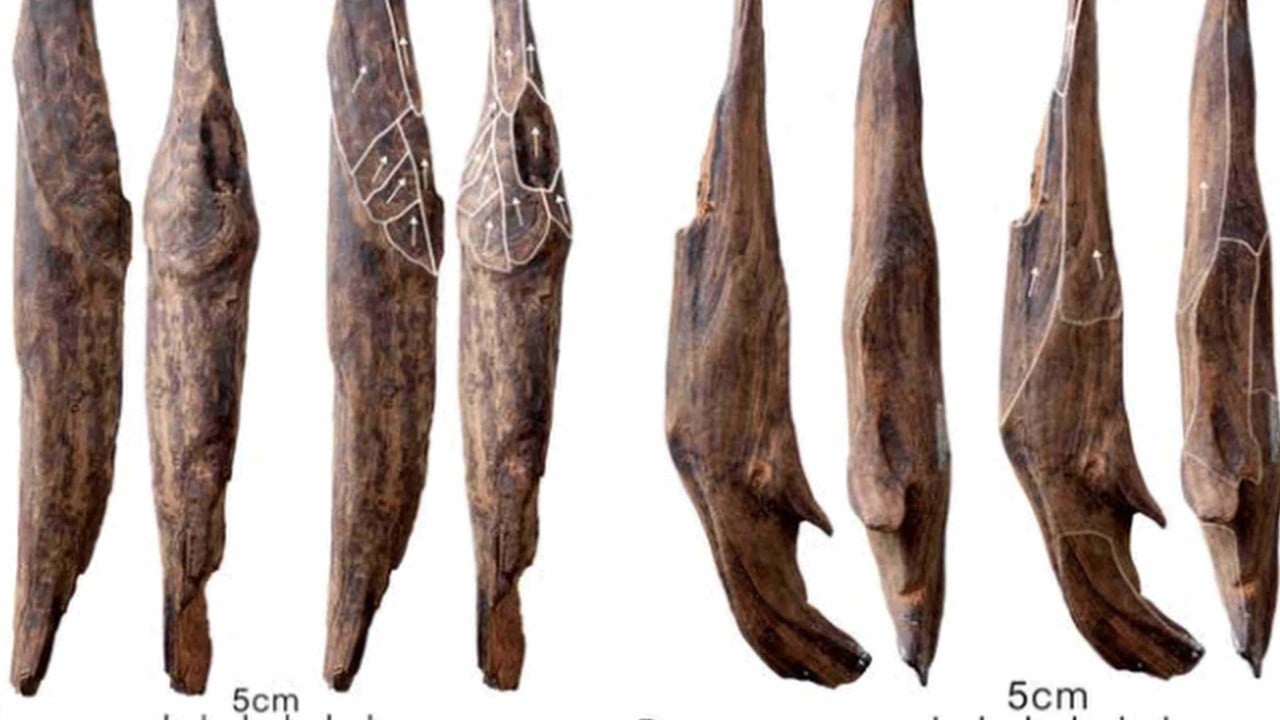The earliest tools used by humans were made of stone, followed by bronze, then iron, and finally steel. But was there a “Wood Age”?
Advertisement
This question has been difficult to answer as wood decomposes easily, leaving behind little evidence of ancient wooden tools – especially in East Asia. However, a study published in the top journal Science on Friday suggests that wooden tools were widely used in southwest China 300,000 years ago.
These wooden tools, unearthed during excavations in 2015 and 2018, were the first ever found at a Palaeolithic – or early Stone Age – site in East Asia. The Palaeolithic age spans from around 2.5 million to 10,000 years ago.
Corresponding author Gao Xing, of the Institute of Vertebrate Palaeontology and Palaeoanthropology under the Chinese Academy of Sciences, told China News that the dozens of wooden artefacts unearthed at the Gantangqing site in Yunnan province represented a “world-class archaeological discovery”.
Gantangqing is situated at the southern edge of Fuxian Lake, near Yunnan’s provincial capital, Kunming. Excavations at the site uncovered many relics, earning Gantangqing a place among China’s top 10 archaeological discoveries in 2015.
Advertisement
“This discovery fills a gap in the study of Chinese Palaeolithic wooden tools,” said Liu Jianhui of the Yunnan Institute of Cultural Relics and Archaeology in a paper in 2015. Liu is first author of the most recent study and led the second excavation at Gantangqing in 2018.

